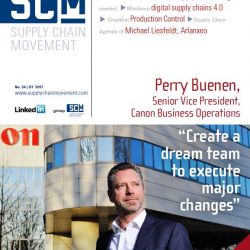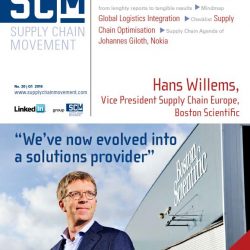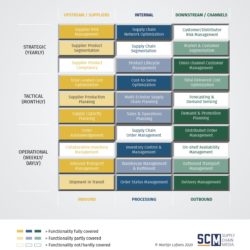Canon’s Perry Buenen: “Create a dream team to execute major changes”

“Implementing a major change only makes sense when the company is ready for it,” says Perry Buenen, of Canon europe. He joined the company nine years ago and soon recognised the need to transform the logistics orientated supply chain into an integrated business operations function. It was a long journey, however, with top level agreement from the emeA board he was able to position the transition within Canon as a company programme not just a supply chain programme. He created a team, with the right mind set and attitude, representing all main functions in the offer to cash process. “to make it work it’s critical not to only focus on process and systems but create your ‘dream team’ that can take care of change management throughout the transformation,” says Buenen. “Strategy is one thing; but a successful execution makes the difference.”
Interview conducted by Martijn Lofvers and Oskar Verkamman, written by Helen Armstrong
The rapid change in technology over the last decade has led many companies to undergo a transformation. During this transition supply chain has emerged from the backroom of logistics to the heart of operations. Here it’s important to recognize the different needs of customers and channels and develop different supply chain offerings, to match these needs. “The organization now in place at Canon Europe will ensure, not only Canon’s ability to effectively and efficiently deliver operational support, but also assist the business to meet customer needs and enhance their experience,” says Perry Buenen. Perry is responsible for overall supply chain management at Canon Europe, the EMEA arm of Canon Inc., a global provider of digital imaging technologies for people, businesses and industry. Currently he has a dual role. While he is primarily responsible for transforming the business operations function he is also heading up a company programme, integrating two companies, that is resulting in a single set of consistent business processes, supported by a single set of applications. In this role he partners with the CIO, who takes responsibility for the IT component.
What triggered the supply chain transformation?
“In the recent past, three factors came together. We noticed that our traditional market for cameras and copiers was becoming mature and there was a shift to higher value propositions. Adding to that were a series of acquisitions and mergers including Océ for high-end printing, Axis for security cameras and video software, and more recently Toshiba Medical Systems which increased complexity. As a result of these two factors, our portfolio became increasingly diverse. The third change was a shift in customer behaviour which triggered us to adapt to support these needs and develop new routes to market which then needed to be installed.
At that time, we had different processes and solutions within the supply chain for different business pockets, for example for consumer products and B2B. The acquisitions made it increasingly difficult to manage these processes from both an organisational and IT perspective. Just adding additional capabilities to an already complex system would have further complicated matters. The complex IT infrastructure to support all these processes was also costly and somewhat inflexible making it difficult to adapt to changing circumstances. What also did not help was that responsibilities for the different functional areas were scattered throughout the company, and in combination, there was an imbalance in EMEA between activities offered centrally and locally. Quite simply, all of this needed to be addressed.”
… … … … …
Read the full article in Supply Chain Movement 24 | Q1 – 2017










